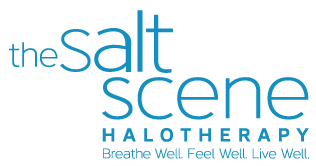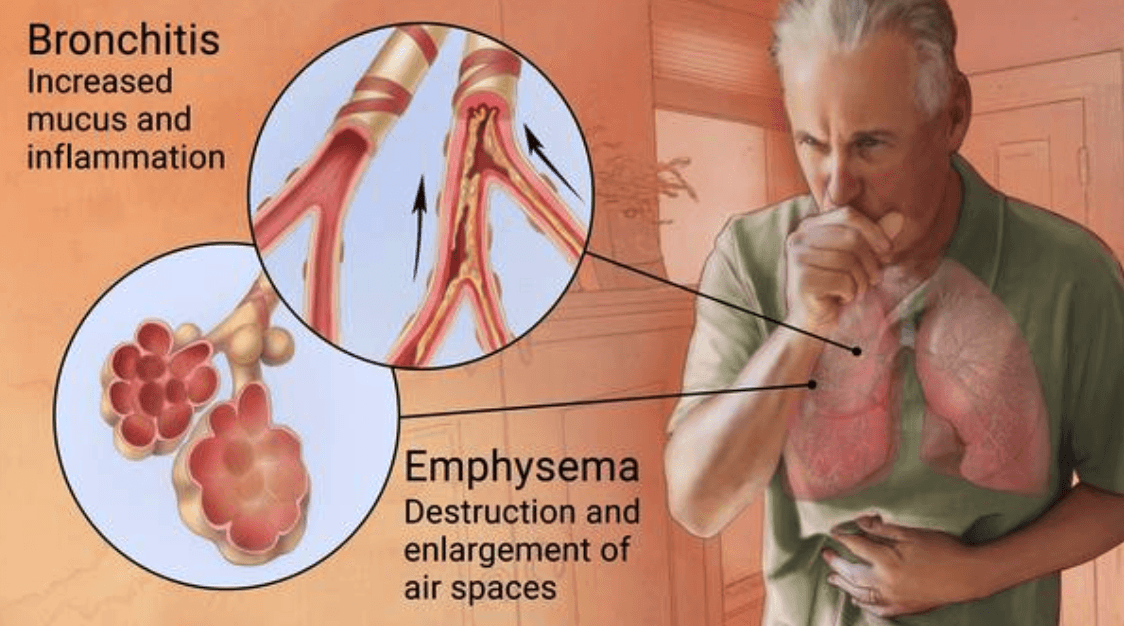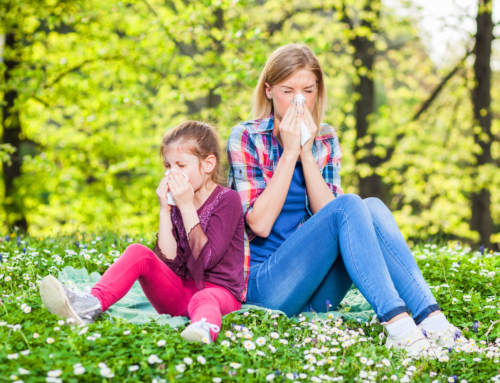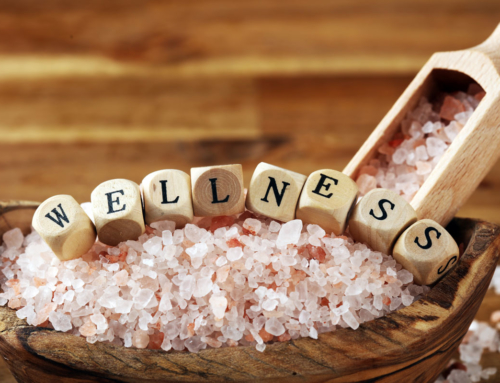Chronic Obstructive Pulmonary Disease, or COPD, is a disease that causes inflammation in your lungs. It is now the fourth leading cause of death in the United States with over one hundred and fifty thousand people dying from the disease each year (CDC, 2017). The known causes of COPD are smoking, exposure to environmental pollutants, and respiratory infections as a child (WHO, 2006). In people with COPD there is an excess amount of damage to the lungs that results in the build-up of mucous in the respiratory tract and the lungs as well as the death of lung tissue. These symptoms are similar to that of bronchitis and emphysema (MacNee, 2006).
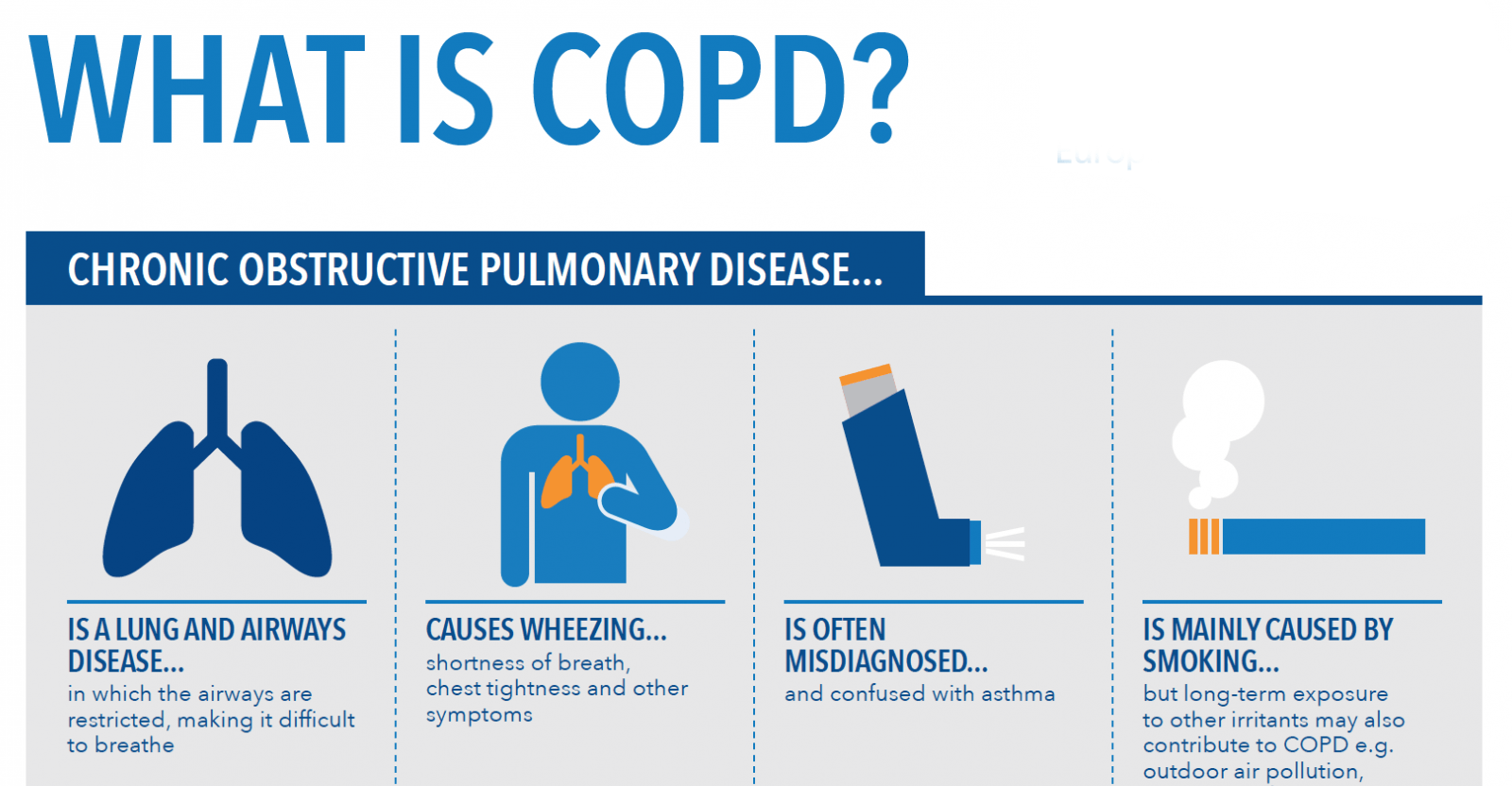
As COPD progresses, the small parts of the lungs that exchange oxygen with the blood stream become damaged to a point where the tissue dies; this is called fibrosis (MacNee, 2006). The progression of the disease can also lead to pulmonary hypertension. As the name implies, this is high blood pressure but it is high blood pressure in the arteries going to and in your lungs. This occurs because the dead tissue in the lungs cannot deliver oxygen to your blood to pump it throughout your body (need citation). This will result in breathlessness, inability to exercise & loss of muscle, cardiovascular complications, and depression because oxygen is not getting to the rest of the body.
The current medical treatments for COPD include bronchiodilators (expand the airway), corticosteroids (reduce inflammation), and antibiotics (reduce infections). However, Speleotherapy, or halotherapy, has shown to be effective in the treatment of COPD symptoms. Halotherapy was originally explored as a therapy for lung and breathing diseases in 1843 by a polish doctor. The first clinic was made from a former salt mine in the Krakow Province of Poland in 1958 (Chervinskaya, 2007). These natural salt mines have salt dispersed in the air that make them a great therapy.
Clinics has since been developed that mimic the atmosphere of the salt mines. The microclimate is important for treatment and this includes a specific amount of-
- Temperature
- Humidity
- Pressure
- Airborne sodium and chloride
- Little bacteria and pathogens
The optimal environment can reduce the symptoms of someone suffering from COPD for many reasons. First, it improves the flow of oxygen through the airways by removing mucas and particles trapped in the lungs. Second, reduces the fluid buildup in the lungs caused by inflammation. Lastly, halotherapy removes bacteria from the lungs and airway that can cause infection while increasing immune cells that kill bacteria.
Although the benefits focus primarily on the lungs and respiratory system, the effects can be seen throughout the body. There will be reduced inflammation, improved breathing & immunity, and a better quality of life by less coughing and chest pain (Zajac et al., 2014).
MacNee W. (2006). Pathology, pathogenesis, and pathophysiology. BMJ : British Medical Journal, 332(7551), 1202–1204.
Chervinskaya, A. V. (2007). Halotherapy in controlled salt chamber microclimate for recovering medicine. Balneologia Polska, 2, 133-141.
Zajac, J., Bojar, I., Helbin, J., Kolarzyk, E., & Owoc, A. (2014). Salt caves as simulation of natural environment and significance of halotherapy. Annals of Agricultural and Environmental Medicine, 21(1).
World Health Organization. (2006). Chronic obstructive pulmonary disease (COPD). Retrieved from https://www.who.int/news-room/fact-sheets/detail/chronic-obstructive-pulmonary-disease-(copd)
Centers for Disease Control and Prevention. (2017). Chronic Obstructive Pulmonary Disease (COPD). Retrieved from https://www.cdc.gov/copd/index.html
